
Insulin is a peptide hormone produced by beta cells of the pancreatic islets encoded in humans by the insulin (INS) gene. It is considered to be the main anabolic hormone of the body. It regulates the metabolism of carbohydrates, fats and protein by promoting the absorption of glucose from the blood into liver, fat and skeletal muscle cells. In these tissues the absorbed glucose is converted into either glycogen via glycogenesis or fats (triglycerides) via lipogenesis, or, in the case of the liver, into both. Glucose production and secretion by the liver is strongly inhibited by high concentrations of insulin in the blood. Circulating insulin also affects the synthesis of proteins in a wide variety of tissues. It is therefore an anabolic hormone, promoting the conversion of small molecules in the blood into large molecules inside the cells. Low insulin levels in the blood have the opposite effect by promoting widespread catabolism, especially of reserve body fat.

John James Rickard Macleod,, was a Scottish biochemist and physiologist. He devoted his career to diverse topics in physiology and biochemistry, but was chiefly interested in carbohydrate metabolism. He is noted for his role in the discovery and isolation of insulin during his tenure as a lecturer at the University of Toronto, for which he and Frederick Banting received the 1923 Nobel prize in Physiology or Medicine.
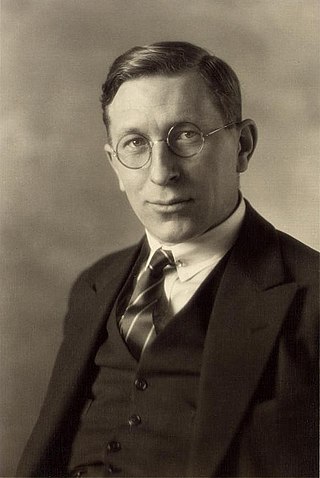
Sir Frederick Grant Banting was a Canadian pharmacologist, orthopedist, and field surgeon. For his co-discovery of insulin and its therapeutic potential, Banting was awarded the Nobel Prize in Physiology or Medicine with John Macleod.
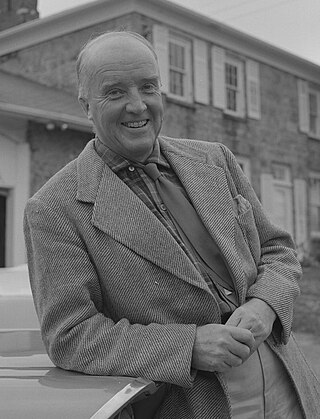
Charles Herbert Best, was an American-Canadian medical scientist and one of the co-discoverers of insulin.

John William Michael Bliss (1941–2017) was a Canadian historian and author. Though his early works focused on business and political history, he also wrote biographies of physicians Frederick Banting, William Osler and Harvey Cushing. Bliss was a frequent commentator on political events and issues. He was an Officer of the Order of Canada.

William Banting was a notable English undertaker. Formerly obese, he is also known for being the first to popularise a weight loss diet based on limiting the intake of carbohydrates, especially those of a starchy or sugary nature. He undertook his dietary changes at the suggestion of Soho Square physician William Harvey, who in turn had learned of this type of diet, but in the context of diabetes management, from attending lectures in Paris by Claude Bernard.

James Bertram Collip was a Canadian biochemist who was part of the Toronto group which isolated insulin. He served as the chair of the department of biochemistry at McGill University from 1928 to 1941 and dean of medicine at the University of Western Ontario from 1947 to 1961, where he was a charter member of The Kappa Alpha Society.

Diabetes Canada is a registered national charity whose mission includes serving the 11 million Canadians living with diabetes or prediabetes. Diabetes Canada programs include:
Banting Memorial High School is a public secondary institution serving grades 9–12, located in Alliston, Ontario, Canada. It is part of the Simcoe County District School Board and has a student population of 1530. The principal is Rob Poissant.
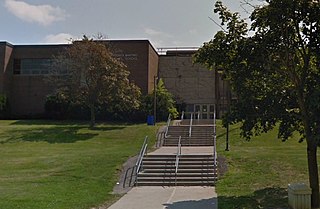
Sir Frederick Banting Secondary School is a high school located in London, Ontario, Canada. It is part of the Thames Valley District School Board. The school is named after Sir Frederick Banting, who won the Nobel Prize for the discovery of insulin in 1923. The school was officially opened in 1969 with Lady Banting, widow of Sir Frederick Banting, in attendance. The founding principal (1968–1970) was George A. Robbins. Banting is recognized for having a strong French Immersion program and a music program.
The Banting Memorial Lectures are a yearly series of research presentations given by an expert in diabetes. The name of the lecture series refers to Canadian physician Sir Frederick Banting, who was a seminal scientist, doctor and Nobel laureate for the co-discovery of insulin. The lectures are currently hosted by the American Diabetes Association.
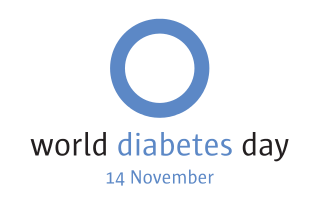
World Diabetes Day (WDD) is the primary global awareness campaign focusing on diabetes mellitus and is held on 14 November each year.

Frederick Madison Allen was an American physician who is best remembered for his carbohydrate-restricted low-calorie diet for sufferers of diabetes mellitus. He was known for pioneering the "starvation diet".

Banting House is a former residence and current museum in London, Ontario, Canada. Located at 442 Adelaide Street North, it is known as the “Birthplace of Insulin.” It is the house where Sir Frederick Banting woke up at two o'clock in the morning on October 31, 1920 with the idea that led to the discovery of insulin.
The following outline is provided as an overview of and topical guide to diabetes mellitus :

The condition known today as diabetes is thought to have been described in the Ebers Papyrus. Ayurvedic physicians first noted the sweet taste of diabetic urine, and called the condition madhumeha. The term diabetes traces back to Demetrius of Apamea. For a long time, the condition was described and treated in traditional Chinese medicine asxiāo kě. Physicians of the medieval Islamic world, including Avicenna, have also written on diabetes. Early accounts often referred to diabetes as a disease of the kidneys. In 1674, Thomas Willis suggested that diabetes may be a disease of the blood. Johann Peter Frank is credited with distinguishing diabetes mellitus and diabetes insipidus in 1794.

Elixir is a children's historical novel by Canadian author Eric Walters. It takes place in the University of Toronto in Toronto, Ontario, in the year of 1921 and is based on the discovery of insulin by Frederick Banting and Charles Best. The story is told from Ruth's point of view.
Calvin Ralph Stiller is a Canadian physician, scientist, and entrepreneur. He retired as a member of the Schulich School of Medicine & Dentistry at Western University in London, Ontario.
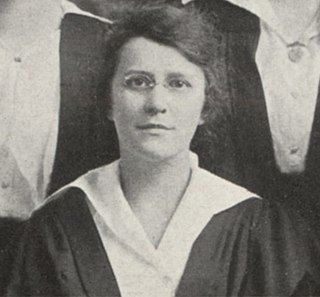
Gladys Lillian Boyd was a Canadian paediatrician at the Hospital for Sick Children in Toronto. She was a pioneer in the treatment of juvenile diabetes. A collaborator of Sir Frederick Banting, she was one of the first physicians to treat diabetic children with insulin.
















